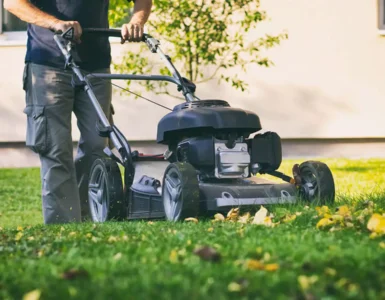
Keeping a lush green lawn isn’t just about making your lawn look good; it’s about creating a space where you can make memories. A healthy lawn sets the stage for these moments, from lawn BBQs to a quiet morning coffee with a view. Here’s an insider tip on achieving a healthy lawn: it’s easier than you think. You don’t have to spend every weekend buried in lawn work to achieve a picture-perfect lawn.
Instead, the secret lies in avoiding the common mistakes most of us unknowingly make. You can transform your lawn with a few simple tweaks and some insider knowledge. Let’s delve into the common pitfalls of lawn maintenance and discover how to avoid them, ensuring your grass is always the envy of the block.
This blog will provide you with the knowledge to outsmart common lawn care mistakes. We’ll look into the secrets to proper watering, mowing, and fertilization, all tailored to your specific lawn type.
Lawn Maintenance: Common Mistakes and How to Avoid Them?
Read on to learn about people’s common mistakes and how to avoid them like a pro.
Getting Soil and Fertilization Right
The first step to a flourishing lawn is healthy soil. Without it, you might have compacted ground lacking nutrients, and your grass won’t grow. So test your soil every couple of years to see what nutrients it has and doesn’t have and if its pH is too low (acidic) or too high (alkaline). Additions like compost improve both the structure and fertility of the soil.
Remember, using more fertilizer isn’t better for your lawn, and if you use too much, you will harm your lawn and the environment more than good. Another key lawn care set of tips for you to follow is to use slow-release organic fertilizers as directed on the package.
The best time to fertilize your lawn is in the early spring and again in late fall. This gets you out of the intense summer heat when too much fertilizer will only stress your lawn and the results you are working for. It also focuses on soil health, making your lawn lush, green, and healthy.
Aeration and Thatch Control to Keep Your Lawn Breathable
Compacted soil and too much thatch are the biggest barriers to a healthy lawn. When soil gets too hard, it’s tough for air, water, and nutrients to reach the roots where they’re needed. And thatch—a thick layer of dead grass and debris—can choke your lawn.
That’s why it’s important to aerate your lawn every few years. Aerating punches tiny holes in the soil that help roots grow deeper and grass grow thicker. If your lawn has a lot of thatch, you may have to dethatch it—remove the dead material so the lawn can breathe and get the nutrients it needs. You can dethatch the lawn using the right equipment or turn to Toronto Lawn Maintenance Services to take care of it.
Mowing the Right Way
Mowing your lawn might seem simple, but there’s a right and a wrong way to do it. One of the biggest mistakes is cutting the grass too short. This stresses grass and makes it an easy target for pests and diseases. Short grass means more sunlight reaches the soil, making the water dry faster and encouraging weeds to sprout.
To keep your lawn happy and healthy, aim to keep your grass 3 inches tall. This height helps protect the soil underneath and supports strong root growth. It’s also important to use a mower with sharp blades. Dull blades don’t cut cleanly; they rip the grass, leaving it with rough, brown edges.
Another important tip is to wait until the grass is dry before you mow. Cutting wet grass can cause the cut grass to clump together and not spread evenly. This can smother the grass underneath and lead to uneven growth or even patches where the grass doesn’t grow well.
Smart Watering for a Healthy Lawn
Watering your lawn may seem simple, but doing it correctly is the key to keeping your grass green and healthy. Many people mistakenly believe that more water is always better. However, excessive water can harm your lawn by drowning the roots and encouraging diseases. On the other hand, insufficient water can leave your grass weak and full of patches.
Supplying water to your lawn an inch per week is the right approach. This could come from rain or your garden hose. Watering in the early morning is preferred because it helps prevent water loss through evaporation and allows your grass to dry off by evening. If unsure when to water, try the screwdriver test: push a screwdriver into the soil. Your lawn is okay if it goes in easily 3-4 inches. If not, it is high time to turn on the sprinkler.
Wrapping it up!
Lawn care is not one-size-fits-all. Different grass types, soil conditions, and climates require different approaches. Learn about your lawn’s needs and adjust your maintenance routine accordingly. There’s a lot of room for error when it comes to lawn care. As with many things, consistency and attention to detail are incredibly important in lawn care.
The good news is you can have the green lawn of your dreams with the right practices and a little patience. Whether you need to adjust your watering schedule or change your fertilization routine, staying flexible will help keep your lawn in good shape.
